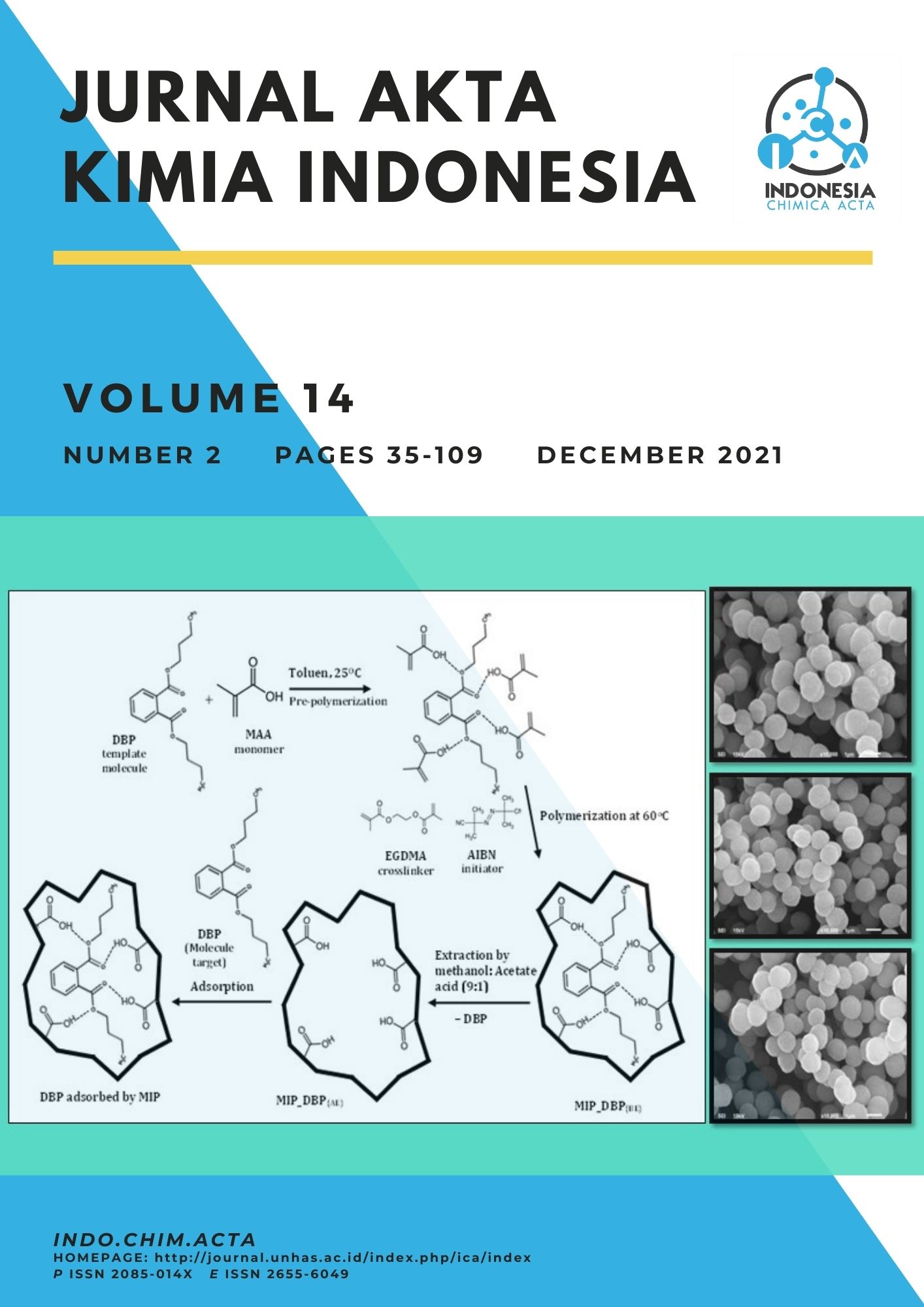Main Article Content
Abstract
Heavy metal pollutants and polycyclic aromatic hydrocarbon contaminants, also known as PAHs, need attention from related parties, considering that their use is very wide, as well as their relatively high natural releases. Careless and uncontrolled handling has the potential to cause problems for creatures, especially in marine ecosystems. The aim of the study was to determine the performance of marine sponge microsymbiont isolates in heavy metal biosorption and PAH biodegradation. The method applied, pure isolates of marine sponge symbionts were cultured on NA media. The suspension of isolates was made using physiological 0.9 % NaCl solution. Suspension adapted 24 hours. The isolate suspension was interacted with heavy metals Cd2+ and As3+, each with a concentration of 100 ppm and naphthalene and anthracene with a concentration of 1000 ppm. Interaction time of 5, 10, 15, and 20 days. Results of the analysis showed the biosorption capacity of the bacterial isolate Sp6.B2 to Cd2+ = 83.190 %, while Sp8.B1 = 82.240 %. Biosorption performance of Sp6.B2 isolates against As3+ = 99.890 %, while Sp8.B1 = 99.894 %. The biodegradation performance of Sp6.B2 isolates had a higher aggressiveness towards naphthalene and anthracene test contaminants than Sp8.B1 isolates. These results indicate that the biosorption performance of Sp6.B2 ˃ Sp8.B1 isolates against Cd2+ contaminants and vice versa Sp6.B2 ˂ Sp8.B1 against As3+ biosorption, while the biodegradation performance of Sp6.B2 ˃ Sp8.B1 isolates both against naphthalene and anthracene test contaminants
Article Details

This work is licensed under a Creative Commons Attribution-ShareAlike 4.0 International License.
How to Cite
Marzuki, I., Marzuki, A. M. A., & Hardimas, H. (2021). Performance Analysis of biosorption of Heavy Metal and Biodegradation PAH of Isolates Marine Sponges Symbiont Bacteria. Jurnal Akta Kimia Indonesia (Indonesia Chimica Acta), 14(3). https://doi.org/10.20956/ica.v14i3.18333
